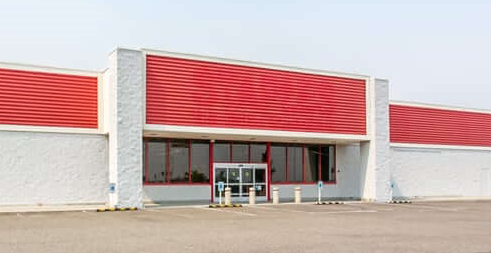
As we continue to grasp the many ways in which the COVID-19 pandemic has changed our daily lives, the closure of thousands of businesses across the United States is a stark reminder that the impact of the pandemic extends well beyond physical health. Now, over 18 months into the COVID-19 pandemic, armed with the latest CDC and regulatory guidance, new businesses are opening in spaces left vacant as a result of the pandemic, creating a trend in the “adaptive re-use” of commercial properties.
The concept of adaptive re-use centers around the renovation and re-use of pre-existing structures for new purposes. For example, a vacant supermarket space may be re-imagined as a medical center, or an empty strip mall may be re-designed as an office space. Re-purposing commercial spaces is a more sustainable and can be a more cost-efficient approach to beginning or expanding a business than a build from the ground up. When making the decision to re-use an existing property for a new purpose or new design, business owners must be aware of some important considerations.
Re-use of commercial space may entail some level of demolition or construction, and contractors should proactively assess the potential for exposure to existing contaminants such as asbestos, lead based paint, or mold before they begin their work.
- Asbestos/Lead Based Paint: In commercial buildings constructed prior to 1980, some construction materials may have included an asbestos component, or lead based paint may have been used. Prior to any construction work, the facility should be evaluated for the potential presence of such contaminants. If asbestos or lead are suspected, owners or contractors should contact a consultant to have samples collected and analyzed.
- Mold: Whether pre-existing or newly constructed, mold may grow in commercial building spaces, especially in spaces with refrigeration or industrial coolers. The CDC reports mold can cause many health effects including sore throat, coughing, wheezing, burning eyes, skin rash, and other severe reactions. Mold can grow in dust, paints, wallpaper, insulation, drywall, carpet, fabric, and upholstery.
In commercial spaces that have been closed and/or vacant for any length of time, lack of plumbing fixture use can result in growth of bacteria such as legionella in stagnant or dead leg water supplies.
- Legionella: When a new tenant occupies a commercial space which was previously vacant, testing for legionella is recommended due to lack of water flow. Legionella pneumophila is a bacterium found naturally in freshwater environments. When ideal conditions for bacteria proliferation occur, such as warm, standing or stagnant water, bacteria can multiply to levels of concern. Bacterial growth can occur in water storage vessels, delivery piping and fixtures at end-point uses, or in standalone devices such as cooling towers, hot tubs and decorative fountains. Facility owners and managers may want to develop or validate a water management plan in the case of larger buildings to reduce the growth and spread of Legionella.
Further, over the past 18 months, the need to slow and prevent transmission of COVID-19 has put renewed emphasis on the importance of Indoor Air Quality (IAQ), in commercial buildings. As defined by ASHRAE Standard 62.1-2019, acceptable indoor air quality is air in which there are no known contaminants at harmful concentrations, as determined by cognizant authorities, and with which a substantial majority (80% or more) of the people exposed do not express dissatisfaction. Proper building ventilation among other engineering controls can limit employee exposure to contaminants.
- Ventilation: Validation of the effectiveness of engineering controls, including ventilation in commercial buildings is key to continuing and sustaining our recovery from COVID-19. When repurposing an existing commercial space, the ventilation systems should be thoroughly evaluated for their effectiveness as it pertains to the new intended use of the space. A ventilation system design that works well for one type of business and building configuration might not work well for another. Replacement of old heating, air conditioning, and ventilation (HVAC) systems is not always necessary; existing systems can be evaluated and tested for filtration efficiency and air change rate to ensure fresh air.
At RHP Risk Management, we help our clients navigate the uncertainties associated with environmental and occupational hazards and risks. Our staff of public health professionals are experienced and trained in recognizing, anticipating, and controlling hazards. Our services include ventilation validation, IAQ assessments, asbestos inspections, mold inspections, lead paint inspections, and water testing services. For more information on RHP’s services and contact information, please visit www.rhprisk.com.
